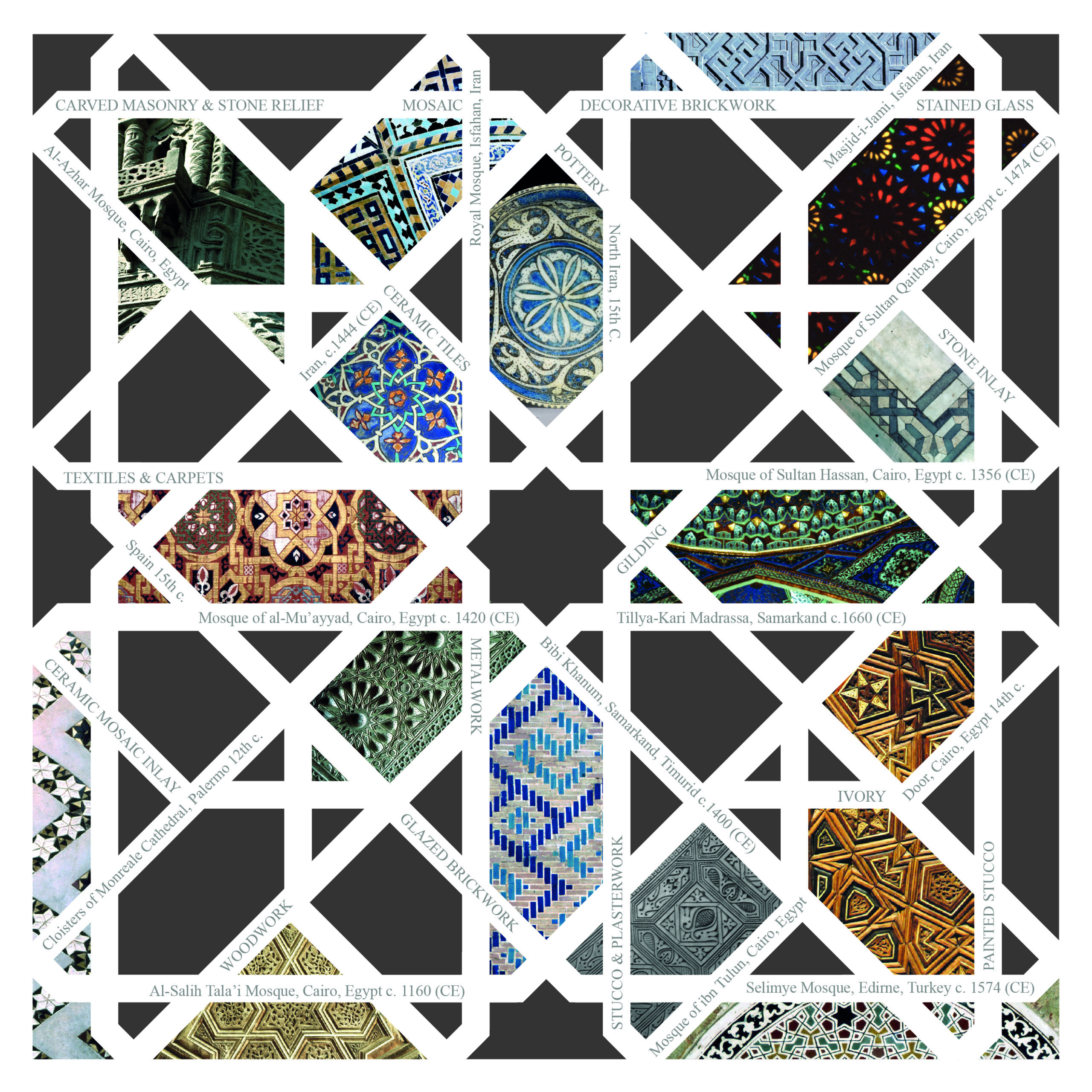ISLAMIC GEOMETRIC PATTERNS – MEDIUMS
The tradition of making geometric patterns within Islamic art has lasted over a millennium. Through the wielding of the basic principles of geometry, works found in both religious and secular contexts, in an array of media – from ivory to glass – provide an intricate and complex glimpse into the spiritual world.
Thanks to the diversity in pattern formations, varying in complexity, they work effectively in an array of mediums, fitting to various forms – whether that may be a stone carving, a tiled wall etc. This versatility in the creation of art allowed it to develop and flourish within Islamic culture, as it could, and would be used to adorn everything in both religious and non-religious contexts.
Within the framework of religion, for centuries, Islamic geometric patterns have been employed as decorative elements, within the architecture of mosques (and other buildings), on walls, ceilings, doors, domes and minarets. The same can be said for domestic items; they also feature in books and textiles, imparting significance and value.
Below I’ve created a collage, exploring the primary mediums used by craftsmen, accompanied by an example, sourced to its origin and date of creation.
